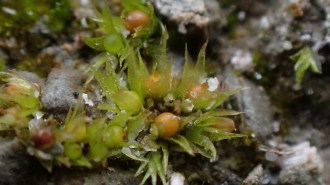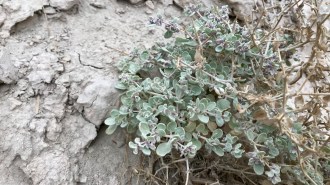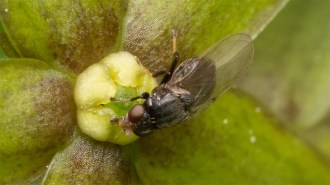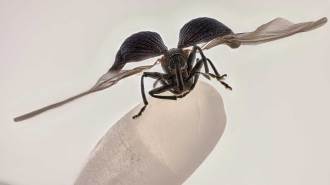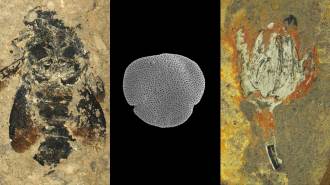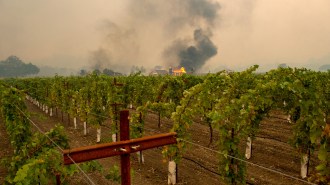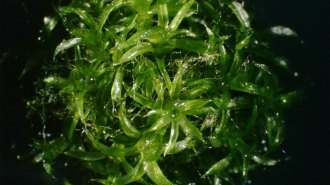After 5 years of mystery, California pathologists announced Monday that they may have found the cause of a new disease that makes oak trees ooze red liquid and then die.
The disease, sudden oak death, seems to come from a previously unknown species of the microscopic, funguslike Phytophthora genus, says David Rizzo, a plant pathologist at the University of California, Davis. He and other members of the University of California oak-research team presented their findings at one of their study sites in Marin County.
So far, three species common in coastal woodlands have proved vulnerable: tan oak (Lithocarpus densiflorus), coast live oak (Quercus agrifolia), and black oak (Quercus kelloggii).
Thousands of trees, ranging from Santa Barbara into Humboldt County in northern California, show symptoms of the disease. “What we’re worried about is that it will move,” Rizzo warns. The team hasn’t yet figured out how the disease spreads but urges people not to carry firewood or soil out of the affected region.
Rizzo’s nightmare scenario starts with campers on a visit to an infected coastal region collecting firewood from the abundant dead oaks. The party, with its leftover firewood, then travels to Yosemite and infects the park’s “gorgeous groves of black oaks,” Rizzo says.
That fear spurred the researchers to announce their preliminary results. Like those who study human disease, plant pathologists test suspect pathogens with procedures based on Koch’s postulates, named after a 19th-century microbiologist. First, the researchers collect a supposed infectious agent from a diseased subject. Then, they see whether it induces the disease in a healthy test subject. If so, they finally check for the agent in the new victim.
So far, Rizzo’s team has successfully isolated Phytophthora from sick trees and introduced it into healthy plants. In about 3 months, the researchers expect to know whether sudden oak death results.
The Phytophthora sounds like a solid suspect to Frank H. Tainter of Clemson University in South Carolina. He’s nailed a relative, Phytophthora cinnamomi, as the cause of oak die-offs in Mexico. “The first time I saw an aerial photograph of the California oaks, in USA Today, I called [the California researchers] and said, ‘It looks a lot like Phytophthora.'”
A previously unknown Phytophthora lurking in woodlands also sounds plausible to one of the authorities on these pathogens—Everett Hansen of Oregon State University in Corvallis.
“Forests haven’t been studied that well,” observes Hansen, who’s describing five new species of Phytophthora. The previously known species of the genus have been bad enough, notes George W. Hudler, a tree pathologist at Cornell University. One species caused the Irish potato famine of 1845, and another is attacking Port Orford cedars in the Pacific Northwest. P. cinnamomi is killing thousands of acres of eucalyptus trees in Australia, says Hudler.
The newest scourge could have lived peaceably elsewhere, causing little damage until it came upon U.S. oaks, Rizzo speculates. Or perhaps some environmental factor permitted a longstanding, low-level nuisance to become a rampant tree killer. Or the microbe itself may have turned virulent. At the moment, Rizzo, laments, he just doesn’t know.
